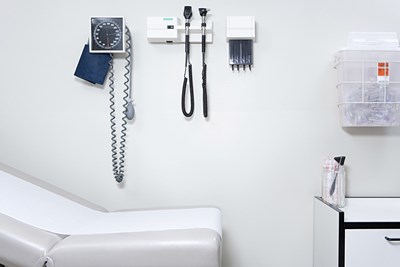Reactive airway disease (RAD) is often a gateway diagnosis to full-blown asthma. Not only are both illnesses the result of an airway that overreacts to certain triggers, the symptoms of both diseases are similar, with the caveat of a six month limit on RAD before it is considered asthma.
Medical history is extremely important to an accurate diagnosis, as is access to appropriate diagnostic materials. RAD is a common diagnosis in young children especially, because diagnostic tools are often inaccurate until six years of age. Here’s a look at the symptoms of reactive airway disease.
RAD Symptoms
If your child has been having respiratory issues for an extended length of time, it’s probably a good idea to get them into the doctor. It’s important to take notes about symptoms and their severity while they’re happening, so that you can be as clear as possible. The most common symptoms of RAD include:
- Persistent coughing
- Wheezing
- Chest tightness
- Difficulty breathing
- Shortness of breath
If you notice these occurring frequently or for a long period of time, it’s definitely time to get to the doctor.
RAD Episodes
Sometimes, when a patient has RAD or asthma, episodes may occur where the disease becomes very severe for a period of time. The bronchi begin to spasm and swell, and more mucus is produced. Abnormal breathing in the form of “retractions,” a deep sucking in of breath that outlines the ribs, may also be present. Additionally, the patient may act more irritable than normal, cough or wheeze persistently, become pale or sweaty, develop a glassy look to their eyes, or become listless or lack an appetite.
Remember to remain calm, as your anxiety can increase their anxiety, which can make the episode worse. Follow your medical provider's directions for administering medication and try alternative methods, such as a warm drink to relax the throat or getting away from whatever triggered the episode.
RAD Triggers
There are quite a variety of things that may be considered “triggers” for RAD and asthmatic patients. Many times, it can take awhile to figure out what’s causing so many problems. Common allergens and irritants that may be triggers for episodes include:
- Pets
- Molds
- Mildew
- Pollen
- Dust
- Smoke
- Strong smells (like perfume)
- Stress
- Anxiety
- Physical activity
Once you’ve figured out which triggers your RAD sufferer is susceptible to, the disease can be much easier to treat. There are ways to avoid or manage exposure to most of these triggers—although it can be quite a task in some cases. Talk to your doctor about the best way to control RAD episodes and personal triggers.



